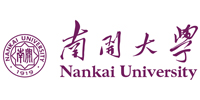
While many universities prize their reputations, student success is not always prioritised when institutions are looking to strengthen their standing
Many higher education institutions have made student success a top priority, particularly post-pandemic. However, measuring student success isn’t always easy. Metrics in this area can be difficult to create – they have to be determined by the goals and personal situations of each student.
Nevertheless, success can be measured through considerations such as graduation rates, retention rates, academic achievement, degree attainment and student advancement. During a discussion at the 2022 THE Leadership and Management Summit, Brian Blake, president of Georgia State University, reflected on which of these considerations are most important to universities, taking into account global and regional differences.
“Typically, a university is judged on four ideals,” Blake said. “These are third-party rankings, perceived institutional value, innovation with direct societal impact, and the perceived quality of its alumni network.”
Many of these ideals can be viewed through the lens of student success. Third-party rankings, for example, are influenced by the student experience, as well as retention and graduation rates. Likewise, social mobility, affordability and time-to-degree all represent important metrics in terms of an institution’s perceived value.
“In the US over the last 50 years, bachelor’s degree attainment by socio-economic background reveals a huge, untapped opportunity to enhance social mobility,” Blake said. “Georgia State University has grasped this opportunity, increasing its percentage of students from a low-income background from 31 per cent to 59 per cent.”
At the same time, the university has increased its diversity. While 53 per cent of its students came from ethnic minority backgrounds in 2008, this figure reached 74 per cent in 2019. “Georgia State University has a significant student population in terms of both socio-economic and ethnic diversity,” Blake added.
The university is ranked in the top 1 per cent of American universities for social mobility. This is the result of a number of support programmes from across the student journey. “We found that a significant percentage of students that had confirmed their attendance at Georgia State did not ultimately enrol,” Blake said. “We set up a portal to guide students through the challenges that increase ‘summer melt’. We also use AI-enhanced chatbots to offer students answers to their most common questions 24/7. Overall, the institution has been able to reduce ‘summer melt’ by 37 per cent over the years.”
Georgia State has also found that students change their degree programmes on average 2.6 times, so learners need to be able to see all the choices available to them. The university has set up technology architecture called Meta Majors to allow students with similar majors to communicate and view a broader picture than just their degree. “We have witnessed significant increases in GPAs and retention rates as a result of our freshman learning communities and our Meta Majors technology,” Blake said.
Some of the impacts that Georgia State University has empowered have been truly transformative for students. “We’ve had more than a 100 per cent increase in the number of degrees that have been awarded to African American, Hispanic and low-income students,” Blake said. “We’ve significantly increased the number of undergraduate degrees we’re awarding and we’re receiving attention from companies and foundations for our societal impact. These improvements are reflected in our rankings, of course, but more importantly, are driving student success forward at our institution.”








